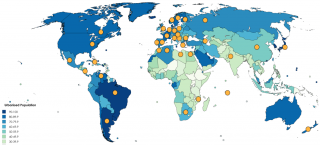Shrink Wrap Machine Buyer’s Guide

Shrink Wrap Machine Buyer’s Guide: Pick the Right System for Your Throughput
A practical 2025 guide to align speed, film, tunnel and budget—without overbuying.

Why Your Choice Impacts Cost and Quality
A well-matched shrink solution reduces rework, film waste and operator fatigue while keeping presentation crisp.
The wrong setup costs more every day in slow cycles and inconsistent seals.
Step 1 — Define Scope: Products, Volumes, Shifts
- SKUs and sizes: largest height/width dictates sealing window and tunnel aperture.
- Daily pieces and shifts: occasional batches → chamber; steady flow → semi-auto; multi-shift → fully automatic.
- Compliance: food/cosmetics often require certified POF films and hygienic features.
- Footprint & power: plan for tunnel ventilation, phases and operator path.

confezioni con film termoretraibile
Step 2 — Compare Machine Types
Chamber / One-Step
Compact, low CAPEX, ideal for small batches and frequent changeovers. Sealing and shrinking occur in one chamber.
Semi-Automatic (L-Bar + Tunnel)
Higher cadence and repeatability. Conveyors/infeeds reduce handling; great when scaling from artisan to SME volumes.
Fully Automatic Lines
Integrated infeed, detection and continuous sealing maximize uptime. Best for high volume, multi-SKU with recipes.
| Type | Typical speed | Changeovers | Best for |
|---|---|---|---|
| Chamber | Low | Very fast | Startups, seasonal batches |
| Semi-Automatic | Medium | Fast | SMEs increasing throughput |
| Fully Automatic | High | Recipe-based | Multi-shift, stable demand |
Explore:
Shrink Wrapping Machines ·
Shrink Tunnels
Step 3 — Film Selection and Gauge
- POF: retail clarity; food-grade variants available; versatile for most goods.
- PVC: economical but less eco-friendly; check local rules.
- PE: strong for bundles and heavier items; common with sleeve/bundlers.
Perforation, slip and gauge control shrink memory and corners. Test two gauges on your biggest SKU.
Step 4 — Tunnel Sizing, Energy and Ergonomics
- Aperture & clearance: height/width after sealing + margin.
- Energy profile: insulation, warm-up time, standby and airflow control.
- Ergonomics: belt type, guards, operator reach, maintenance access.
Step 5 — Total Cost of Ownership (TCO)
Look beyond price: energy, consumables, labor, planned maintenance and parts availability drive real payback.
- Tool-less adjustments and saved recipes reduce training time.
- Consistent seals cut rewraps and waste more than film unit cost.
- Local service shortens downtime and protects ROI.
Step 6 — Pilot Run with Your SKUs
Bring 3–5 representative SKUs to our test area. Validate seals, corners, shrink, readability and dimensions. Document settings for SOPs.
FAQ
Do I need a tunnel if I buy a chamber machine?
No. Chambers seal and shrink in one step. Tunnels are needed with L-Bar/continuous systems.
Is POF film food-safe?
Most POF variants are food-grade when certified. Always verify documentation for your market.
How do I size the tunnel?
Use sealed product dimensions; add clearance for airflow and conveyor guards.
Book Live Tests with Your Products
Compare chamber, semi-automatic and fully automatic setups side-by-side. We’ll record recipes and give you a TCO snapshot.








